✂️ How to Prevent Paper Tearing 🚫 Tunneling & Canoeing on the RollPros™ Blackbird | Ultimate Guide 2025
Running an automated pre-roll machine like the RollPros™ Blackbird is a game-changer for production efficiency 🚀 — but nothing kills your workflow faster than paper tears, tunneling, or canoeing issues! 😤 These frustrating problems can waste materials, slow down production, and damage your brand reputation if inconsistent pre-rolls reach customers.
Whether you're dealing with constant paper tears that halt production ✂️, tunneling that ruins the experience 🔥, or uneven canoeing burns that make your pre-rolls look unprofessional 🚫 — this comprehensive guide has you covered! We'll dive deep into the root causes of these issues and provide actionable solutions focused on proper consumables selection, machine calibration, and maintenance best practices. 💪
From choosing the right custom rolling paper bobbins to optimizing your filter tips and mastering tension settings, we'll help you achieve flawless pre-roll production every single time! ✨ Let's eliminate those production headaches and get your Blackbird running like a well-oiled machine! 🎯
📋 Table of Contents
- 🔍 Understanding Paper Tearing, Tunneling & Canoeing
- 🎯 Root Causes of RollPros Blackbird Paper Issues
- 📦 Choosing the Right Consumables for Your Blackbird
- 🧻 Custom Rolling Paper Bobbins: Quality Matters
- 🔌 Custom Filter Tips & Glass Tips Selection
- ⚙️ Proper Machine Calibration & Tension Settings
- 🔧 Troubleshooting Guide: Fixing Common Problems
- 🧹 Maintenance Schedule for Consistent Performance
- ✨ Best Practices for Flawless Pre-Roll Production
- ❓ Frequently Asked Questions
- 🏁 Conclusion
🔍 Understanding Paper Tearing, Tunneling & Canoeing
Before we jump into solutions, let's make sure we're all on the same page about what these issues actually are and why they're such production killers! 🎯 Understanding the difference between these problems is crucial for diagnosing and fixing them effectively.
✂️ Paper Tearing: The Production Stopper
Paper tearing is exactly what it sounds like — your rolling paper literally rips, splits, or shreds during the rolling process. 😤 This typically happens at the feed mechanism, during the wrapping stage, or when the paper is being pulled from the bobbin. When your Blackbird tears paper, production comes to a screeching halt while you clear the jam, reload, and recalibrate. Not fun! 🚫
Tears usually appear as clean splits along the paper grain, ragged edges from excessive tension, or punctures from catching on machine components. The worst part? Each tear wastes material, costs you time, and increases your per-unit production costs significantly. 💸
🔥 Tunneling: The Silent Quality Killer
Tunneling occurs AFTER the pre-roll is made, during consumption. The center material burns significantly faster than the outer paper, creating a hollow tunnel or channel down the middle of the pre-roll. 🕳️ This creates a harsh, hot experience and wastes material as the tunnel collapses. Your customers definitely won't be happy about this one!
Tunneling is often invisible until the pre-roll is actually used, which makes it particularly dangerous for brand reputation. You might produce thousands of pre-rolls that look perfect but deliver a terrible experience. 😰 This issue stems from inconsistent density, improper tamping, or poor airflow design.
🛶 Canoeing: The Uneven Burn Problem
Canoeing (also called "running") happens when one side of the pre-roll burns faster than the other, creating a canoe-like shape with one high side and one low side. 🛶 This leads to an uneven experience, wasted material on the unburned side, and a product that looks unprofessional and poorly made.
The most common causes include uneven material distribution during filling, inconsistent paper thickness, or moisture content variations. Unlike tunneling which burns down the center, canoeing burns predominantly on one side of the pre-roll, often requiring constant rotation during use to prevent it. Not the premium experience your customers expect! 🙅♂️
🎯 Root Causes of RollPros™ Blackbird Paper Issues
Now that we know what we're dealing with, let's identify the culprits behind these frustrating problems. Understanding root causes is 80% of the solution! 💡 Most issues stem from a combination of factors rather than a single problem.
📊 Poor Quality Consumables
This is the #1 cause of ALL three issues we're discussing! 🥇 Cheap or inconsistent rolling paper bobbins create a cascade of problems. Papers with inconsistent thickness will tear at thin spots, create uneven burns (canoeing), and fail to distribute heat properly (tunneling).
Low-quality papers often have weak fibers, irregular gum lines, rough edges that catch on machine components, and inconsistent moisture content. They might save you a few bucks upfront but will cost you exponentially more in wasted material, downtime, and damaged reputation. 📉 Always invest in premium, automated-machine-rated consumables!
⚙️ Incorrect Machine Calibration
Your RollPros Blackbird is a precision instrument that requires regular calibration. 🎚️ Tension that's too tight will tear paper, while tension that's too loose creates wrinkles and weak seals that contribute to canoeing. Tamping pressure that's too high causes tunneling by over-compacting the center, while too-light tamping creates loose pre-rolls with inconsistent burns.
Many operators set their machine once and forget about it, but calibration drifts over time due to wear, temperature changes, and material variations. What worked perfectly with your last batch of consumables might be completely wrong for your new batch! 🔄
💧 Material Moisture Content Issues
Material that's too dry creates dust and inconsistent density, leading to tunneling. Material that's too wet causes paper adhesion problems and can lead to tearing as the damp paper weakens. 🌡️ Moisture content also affects how evenly material flows through your Blackbird's filling mechanism, directly impacting potential for canoeing.
Ideal moisture content typically ranges between 8-12% depending on your specific material. Store your material in humidity-controlled environments and consider letting opened containers rest for 30 minutes before production to reach ambient equilibrium. This simple step can eliminate many production issues! 🎯
🔩 Mechanical Issues & Misalignment
Feed rollers that aren't parallel will create uneven tension across the paper width, causing tears on one side while the other remains loose. Worn components with sharp edges or burrs will catch and rip paper. Misaligned filling tubes distribute material unevenly, creating the conditions for both tunneling and canoeing. 🔧
Regular inspection and maintenance of all mechanical components is non-negotiable for consistent production. Even tiny misalignments of just a millimeter can cause major quality issues at production speeds! ⚡
🎲 Inconsistent Filter Tip Quality
Your filter tips (or glass tips) play a crucial role in preventing tunneling and canoeing! 🔌 Tips that are too loose allow air to channel preferentially through certain areas, while tips that are too tight restrict airflow inconsistently. Variable diameter tips cause uneven packing density, and low-quality cardstock tips can collapse during use.
Using custom filter tips designed specifically for automated machines ensures consistent performance. Glass tips offer even better results with zero variance in airflow characteristics! 💎
📦 Choosing the Right Consumables for Your Blackbird
Let's talk about the foundation of quality pre-roll production: your consumables! 🏗️ The RollPros Blackbird is only as good as the materials you feed it. Premium consumables aren't just about quality — they're about consistency, which is what automated production demands.
🎯 What Makes Consumables "Blackbird-Compatible"?
Not all rolling papers and filter tips are created equal, and definitely not all are suitable for high-speed automated production! 🚀 Blackbird-compatible consumables need to meet specific requirements for core diameter, paper thickness consistency, edge quality, gum line precision, and dimensional tolerance.
Standard retail papers designed for hand-rolling simply won't cut it in an automated environment. They lack the precision engineering required for high-speed feeding, consistent tension maintenance, and reliable sealing at production speeds. That's why you need purpose-built automated machine consumables! ⚙️
✅ Key Features to Look For
For Rolling Paper Bobbins:
- ✔️ Consistent thickness across entire bobbin (typically 13-14 GSM for standard materials)
- ✔️ Precise core diameter matching your machine specifications
- ✔️ Smooth, clean-cut edges with zero fraying or rough spots
- ✔️ Natural gum arabic that activates reliably at correct moisture levels
- ✔️ Proper wind tension on the bobbin to prevent telescoping
- ✔️ Certified for food-grade or appropriate industry standards
- ✔️ Consistent moisture content within 1% variance
For Filter Tips:
- ✔️ Precise diameter tolerance (±0.1mm or better)
- ✔️ High-quality cardstock that won't collapse or expand
- ✔️ Clean, burr-free cut edges
- ✔️ Consistent density and airflow characteristics
- ✔️ Appropriate length for your pre-roll size
- ✔️ Food-safe materials and inks if branded
For Glass Tips:
- ✔️ Perfect dimensional consistency (glass doesn't vary!)
- ✔️ Appropriate diameter for snug but not tight fit
- ✔️ Smooth, fire-polished edges to prevent paper catching
- ✔️ High-quality borosilicate glass for durability
- ✔️ Internal airflow design optimized for even draw
- ✔️ Easy cleaning and reusability for premium positioning
💰 Cost vs. Quality: The Real Math
Here's where many operators make a critical mistake: choosing consumables based purely on unit price rather than total cost of ownership. 📊 Let's break down the real numbers with a practical example:
| Scenario | Budget Papers | Premium Papers |
|---|---|---|
| Cost per bobbin | $8.00 | $15.00 |
| Paper tear rate | 8-12% | 0.5-1% |
| Defect rate (tunneling/canoeing) | 15-20% | 1-2% |
| Downtime per 1,000 units | 45 minutes | 5 minutes |
| True cost per 1,000 units | $142 | $87 |
| Savings with premium | $55 per 1,000 units (38% reduction!) | |
See the difference? 🤯 When you factor in waste from tears, defective units from tunneling and canoeing, machine downtime, and labor costs for troubleshooting, premium consumables actually cost LESS per usable unit! Plus, your brand reputation improves dramatically with consistent quality. It's a no-brainer investment! 💡
🧻 Custom Rolling Paper Bobbins: Quality Matters
Let's dive deep into the most critical consumable: your rolling paper bobbins! 📜 This is where most paper tearing issues originate, and where the foundation for preventing tunneling and canoeing is laid.
🔬 Paper Specifications That Actually Matter
Paper weight (GSM - grams per square meter) needs to match both your material density and your machine's capabilities. Too thin (below 12 GSM) and you'll get constant tears and uneven burns. Too thick (above 16 GSM) and you risk jamming, poor rolling, and harsh burns. The sweet spot for most automated production is 13-14 GSM. 🎯
But GSM is just one piece of the puzzle! Fiber composition matters enormously. Wood pulp papers are cheap but inconsistent and harsh-burning. Hemp papers offer superior consistency and slower, cooler burns that help prevent tunneling. Rice papers are ultra-thin and clean-burning but require expert handling. Flax papers provide excellent structural integrity to resist tearing. 🌱
🎨 Why Custom Bobbins Beat Generic Options
Custom bobbins manufactured specifically for automated machines undergo quality control that generic papers simply can't match. Each custom rolling paper bobbin is precision-wound with controlled tension to prevent telescoping or loose spots that cause feeding issues. 🎯
Core diameter is machined to exact specifications for your Blackbird, ensuring proper feeding speed and tension maintenance. The gum line is applied with industrial precision rather than brush-applied like retail papers. Edge trimming is done with industrial cutters that leave perfectly smooth edges rather than the rough, torn edges you get from cheaper papers. 💎
Plus, custom bobbins can be tailored to your specific needs: width for your cone size, length for your production run size, and even burn rate characteristics to match your particular material composition. This level of customization prevents 90% of the issues operators face with generic papers! 🚀
🧪 Testing Your Paper Quality
Before committing to a large order, always test your paper quality! Here are quick tests you can perform right in your facility:
🔎 Simple Quality Tests:
- Visual Inspection: Hold paper up to light — you should see perfectly even fiber distribution with no thick or thin spots. Inconsistent appearance = inconsistent performance! 👀
- Tear Test: Gently pull paper in different directions. Quality paper should have consistent resistance in all directions, not weak spots or easy tears. 💪
- Burn Test: Roll a test sample and observe burn characteristics. Look for even ash color, consistent burn rate across the width, and no sparking or unusual smoke (indicates additives). 🔥
- Moisture Test: Check if paper feels crispy-dry or slightly flexible. Both extremes cause issues — proper moisture gives slight flexibility without limpness. 💧
- Edge Examination: Use a magnifying glass to inspect cut edges. Zero fraying, burrs, or rough spots = clean feeding through your machine. 🔬
📦 Storage & Handling Best Practices
Even the best bobbins will cause problems if improperly stored! Keep your paper in a climate-controlled environment at 60-70°F with 40-50% relative humidity. 🌡️ Store bobbins in their original packaging until use, and once opened, use within 48 hours to prevent moisture content changes.
Never store bobbins in direct sunlight, near heat sources, or in areas with dramatic temperature swings. Paper is hygroscopic (absorbs environmental moisture), so fluctuating humidity causes the paper to expand and contract, throwing off all your careful calibration! 📏
🔌 Custom Filter Tips & Glass Tips Selection
Filter tips are the unsung heroes in preventing tunneling and canoeing! 🦸 Most operators focus solely on paper quality and machine settings, but your filter tip choice dramatically impacts burn characteristics and overall quality.
🎯 How Filter Tips Prevent Tunneling & Canoeing
A quality filter tip does way more than just filter — it's an essential structural component! The tip provides crucial support to maintain consistent material density throughout the pre-roll, preventing the center compression that causes tunneling. It regulates airflow to ensure even oxygen distribution across the entire width, preventing the preferential burn paths that cause canoeing. 🌬️
Tips also act as a backstop during tamping, ensuring even compression rather than allowing material to be pushed unevenly to one side. They provide weight distribution that helps the pre-roll burn evenly downward rather than sideways. And they maintain the pre-roll's shape to prevent material shifting during handling and storage. 💡
📏 Sizing & Specifications
The right tip diameter is critical! Too loose and air will channel around the tip rather than through the material (hello, tunneling!). Too tight and you'll struggle with tip insertion, create material compression issues, and risk paper tearing as the paper stretches over an oversized tip. 🎯
For standard 1-gram cones, you typically want 8mm diameter tips. Half-gram cones usually work best with 6-7mm tips. Large 2-gram+ cones may need 10-11mm tips. But always test with your specific paper and material combination — the "perfect" size can vary based on your unique setup! 📐
Tip length matters too! Longer tips (25-30mm) provide better structural support and cooler draws but use more material and can feel bulky. Shorter tips (15-20mm) are more economical but provide less benefit for tunneling prevention. Medium lengths (20-25mm) offer the best balance for most applications. ⚖️
💎 Glass Tips: The Premium Solution
Glass tips take performance to another level! Unlike cardstock tips which can vary slightly unit-to-unit, glass tips offer perfect dimensional consistency — every single tip is identical. This means zero variance in airflow characteristics, which directly translates to more consistent burns and virtually eliminating canoeing! ✨
Glass tips provide superior heat resistance, so they don't soften or collapse during use like cardstock can. They're infinitely reusable, which makes them appealing for premium products and sustainability-focused brands. Plus, the weight and rigidity of glass provides exceptional structural support to prevent tunneling. 🏆
The main considerations with glass tips are initial cost (though they pay for themselves in reusability) and careful handling to prevent breakage during automated feeding. You'll need to adjust your Blackbird's tip insertion mechanism for the different handling characteristics of glass vs. cardstock. Worth it for premium products! 💰
🎨 Branded vs. Unbranded Tips
Custom branded filter tips are an amazing opportunity for brand identity, but quality must come first! 🏷️ Ensure that any printing uses food-safe inks that won't affect taste or create harmful compounds when heated. The printing process shouldn't affect the structural integrity or dimensional accuracy of the tips.
Test extensively before committing to large branded runs — sometimes the printing process slightly alters how tips feed through your machine or how they perform in the final product. It's better to discover issues with a test batch than with 100,000 units! 🧪
⚙️ Proper Machine Calibration & Tension Settings
Now let's talk about getting your RollPros Blackbird dialed in perfectly! 🎚️ Even the best consumables will fail if your machine isn't properly calibrated. This is where art meets science in pre-roll production.
📊 Understanding Tension: The Goldilocks Zone
Paper tension is arguably the most critical setting on your Blackbird, and it needs to be "just right" — not too tight, not too loose! ✨ Too much tension and you'll tear paper, especially at weak points or edges. The paper will also stretch slightly, which changes burn characteristics and can contribute to canoeing as the stretched areas burn differently.
Too little tension creates wrinkles and folds in the paper during rolling, which become weak points that burn unevenly (canoeing central!). Loose tension also means inconsistent gum activation and poor seals. Finding that sweet spot requires careful testing with your specific paper and material combination. 🎯
🔧 Step-by-Step Calibration Process
📝 Complete Calibration Checklist:
Step 1: Paper Bobbin Setup
- Load your custom rolling paper bobbin ensuring it spins freely on its mount
- Thread paper through all guides and rollers according to manufacturer specs
- Set initial tension to the middle position (you'll adjust from here)
- Pull paper through manually to check for snags or resistance points
Step 2: Tension Adjustment
- Run 10 test cones and observe for tears, wrinkles, or loose spots
- If tearing: reduce tension by 1/4 turn and retest
- If wrinkling: increase tension by 1/4 turn and retest
- Repeat until you have 20 consecutive perfect rolls with zero tears or wrinkles
- Mark this setting as your baseline for this consumable type
Step 3: Tamping Pressure
- Start with manufacturer-recommended pressure setting
- Produce 10 test cones and cut them open lengthwise
- Check for even density throughout — center shouldn't be noticeably firmer than edges
- If center is over-compacted (tunneling risk): reduce pressure incrementally
- If pre-roll feels loose or density varies (canoeing risk): increase pressure incrementally
Step 4: Filter Tip Alignment
- Verify tips feed consistently without jamming or misalignment
- Check that tips sit perfectly centered in pre-rolls
- Ensure tips are fully inserted to proper depth (usually flush with paper end)
- Test 50 units to confirm consistent tip placement
Step 5: Material Flow Verification
- Observe material dispensing — should be smooth and even
- Check that filling tube doesn't favor one side over the other
- Verify consistent weight across multiple test samples (±0.05g tolerance)
- Adjust flow rates if weights vary significantly
Step 6: Final Quality Testing
- Produce a batch of 100 units at production speed
- Randomly sample 10 units for detailed inspection
- Test burn characteristics on 3 units — look for tunneling or canoeing
- Document all settings for future reference
- Only proceed to full production after achieving ≥98% quality rate
⏰ Recalibration Schedule
Don't calibrate once and forget about it! Your Blackbird needs regular recalibration to maintain peak performance: 📅
- Weekly: Quick tension check and visual inspection during normal production
- When changing consumables: Full recalibration required — different papers = different settings!
- After 10,000 units: Verification calibration to check for drift
- When quality issues appear: Immediate troubleshooting calibration
- Seasonal: Major recalibration as humidity and temperature change
- After any maintenance: Always recalibrate after replacing parts or adjustments
📓 Documentation Is Key
Create a calibration logbook (digital or physical) where you record all settings for each consumable type you use. 📔 Include paper bobbin specifications, tension settings, tamping pressure, filter tip details, material moisture content, environmental conditions (temp/humidity), and observed performance notes.
This documentation becomes invaluable for troubleshooting issues quickly and for training new operators. When you switch back to a previously-used consumable, you can reference your notes and get back to optimal settings immediately rather than starting from scratch! ⚡
🔧 Troubleshooting Guide: Fixing Common Problems
When issues strike, you need solutions FAST! ⚡ Here's your quick-reference troubleshooting guide for the most common paper tearing, tunneling, and canoeing problems on the RollPros Blackbird.
✂️ Paper Tearing Issues
🚨 Problem: Paper tears during feeding
Quick Fixes:
- ✔️ Reduce paper tension by 1/4 turn increments
- ✔️ Check for rough spots or burrs on feed rollers
- ✔️ Verify paper bobbin is spinning freely (not catching or dragging)
- ✔️ Inspect paper edges for fraying or rough cuts
- ✔️ Check environmental humidity — too dry causes brittle paper
🚨 Problem: Paper tears only on one side
Quick Fixes:
- ✔️ Check feed roller alignment — they should be perfectly parallel
- ✔️ Verify paper is threading straight through guides (not angled)
- ✔️ Inspect for debris or buildup on one side of the feed path
- ✔️ Check if paper bobbin is wound unevenly (telescoping)
🚨 Problem: Paper tears during wrapping/sealing
Quick Fixes:
- ✔️ Verify gum activation — should be slightly tacky, not bone dry or soaking wet
- ✔️ Check wrapping roller pressure (too much pressure can tear)
- ✔️ Ensure filter tips are proper diameter (oversized tips stretch paper)
- ✔️ Test with fresh paper bobbin to rule out quality issues
🔥 Tunneling Issues
🚨 Problem: Consistent center tunneling on all pre-rolls
Quick Fixes:
- ✔️ Reduce tamping pressure by 10-15%
- ✔️ Check material moisture content (too dry = tunneling)
- ✔️ Verify filter tips aren't restricting airflow excessively
- ✔️ Ensure even material distribution during filling
- ✔️ Test with coarser grind (finer material packs tighter)
🚨 Problem: Intermittent tunneling (some units, not all)
Quick Fixes:
- ✔️ Check for inconsistent material density in your source material
- ✔️ Verify consistent weight across all pre-rolls (±0.05g)
- ✔️ Inspect filter tips for dimensional variation
- ✔️ Check if tamping cycle is completing fully every time
- ✔️ Look for material clumping or bridging in hopper
🛶 Canoeing Issues
🚨 Problem: Consistent canoeing on the same side
Quick Fixes:
- ✔️ Check filling tube alignment — it's favoring one side
- ✔️ Verify paper bobbin has consistent thickness across width
- ✔️ Ensure paper feeds straight (not twisted or angled)
- ✔️ Check for uneven gum activation on one side
- ✔️ Test with different rolling paper bobbin to rule out quality
🚨 Problem: Random canoeing (inconsistent side/pattern)
Quick Fixes:
- ✔️ Check material consistency — clumps or varying moisture cause this
- ✔️ Verify even material flow from hopper to filling tube
- ✔️ Ensure filter tips are centered perfectly (off-center = uneven airflow)
- ✔️ Check for paper wrinkles during rolling
- ✔️ Test material moisture and adjust drying/hydration as needed
🎯 When to Switch Consumables
Sometimes the problem isn't your machine — it's your consumables! 🚨 Consider switching to higher-quality consumables if you're experiencing:
- Persistent tearing even after optimizing all settings
- Visible inconsistency in paper thickness or edges
- Defect rates above 5% despite proper calibration
- Excessive downtime for troubleshooting (time is money!)
- Customer complaints about burn quality
Upgrading to premium automated machine consumables designed specifically for the Blackbird can eliminate 90% of these issues overnight! Sometimes the "expensive" solution is actually the most economical when you factor in waste, downtime, and opportunity cost. 💰
🧹 Maintenance Schedule for Consistent Performance
Prevention is always better than troubleshooting! 🛡️ A solid maintenance routine keeps your RollPros Blackbird running smoothly and prevents the majority of paper tearing, tunneling, and canoeing issues before they start.
📅 Daily Maintenance (End of Production)
- ✔️ Remove material dust and debris from all surfaces using compressed air
- ✔️ Wipe down feed rollers with clean, dry cloth
- ✔️ Check paper path for any caught bits or tears
- ✔️ Verify paper tension hasn't shifted during production
- ✔️ Quick visual inspection of all moving parts
- ✔️ Document any issues or quality concerns in your production log
⏱️ Time required: 5-10 minutes
📅 Weekly Maintenance
- ✔️ Deep clean all feed mechanisms and rollers
- ✔️ Inspect feed rollers for wear, rough spots, or material buildup
- ✔️ Check alignment of all paper guides and rollers
- ✔️ Lubricate moving parts per manufacturer specifications
- ✔️ Test tension calibration with spare paper bobbin
- ✔️ Clean filter tip feeding mechanism
- ✔️ Check wrapping/sealing components for gum buildup
- ✔️ Verify all fasteners and connections are tight
⏱️ Time required: 30-45 minutes
📅 Monthly Maintenance
- ✔️ Complete teardown and deep clean of all components
- ✔️ Replace any worn rollers or components
- ✔️ Precision alignment check using manufacturer's tools
- ✔️ Full recalibration with test batches
- ✔️ Inspect electrical connections and sensors
- ✔️ Update any firmware or software
- ✔️ Review production logs for recurring issues
- ✔️ Stock check on spare parts and consumables
⏱️ Time required: 2-3 hours
📅 Quarterly Maintenance (Professional Service)
- ✔️ Professional inspection by certified technician
- ✔️ Precision recalibration of all systems
- ✔️ Replacement of wear items before they fail
- ✔️ Performance testing and optimization
- ✔️ Review of production data and efficiency metrics
- ✔️ Training refresher for operators on any new best practices
⏱️ Time required: 4-6 hours
🔧 Parts to Keep in Stock
Don't let a small part failure shut down your entire production! 🚨 Keep these critical spares on hand:
- Feed rollers: Have 2 complete sets ready to swap
- Belts and tensioners: These wear out predictably
- Sensors and switches: Small but critical components
- Gum activation components: These see heavy use
- Filter tip feeding parts: Frequently adjusted = faster wear
- Basic fasteners and connectors: The little things matter
Plus always keep extra consumables (rolling paper bobbins, filter tips, glass tips) so you never have to halt production waiting for supplies! Planning ahead saves huge headaches. 💡
✨ Best Practices for Flawless Pre-Roll Production
Let's wrap up with the golden rules that separate okay production from exceptional production! 🏆 These best practices will help you maintain consistent quality and minimize issues long-term.
📚 Operator Training & Consistency
Your machine is only as good as the person running it! 👤 Train all operators thoroughly on proper loading procedures, calibration basics, early warning signs of issues, and when to stop production vs. when to adjust. Create clear SOPs (Standard Operating Procedures) for every aspect of operation.
Consistency is key — try to have the same operators running the same shifts. Different operators have different techniques, and constantly changing who runs your Blackbird introduces variables that can cause issues. 🔄
🌡️ Environmental Control
Your production environment matters more than you might think! 🏭 Maintain stable temperature (65-72°F) and humidity (40-50% RH) in your production area. Wild fluctuations affect paper behavior, material moisture content, and gum activation — all recipe ingredients for tearing, tunneling, and canoeing!
Keep your Blackbird away from direct sunlight, heating/cooling vents, and exterior doors where temperature and humidity change dramatically. A climate-controlled production room is worth its weight in gold for consistent quality! 💰
📊 Quality Control Testing
Don't just produce and ship — test regularly throughout your run! 🧪 Pull samples every 100-200 units for weight verification (±0.05g tolerance), visual inspection for consistency, and most importantly, actual burn testing. You can't catch tunneling or canoeing issues without burning test units!
Keep detailed records of your QC testing. Patterns in defects often reveal underlying issues before they become major problems. Track defect rates by shift, operator, consumable batch, and environmental conditions to identify correlations. 📈
🎨 Batch Testing New Consumables
Never switch to new consumables mid-production run! 🚫 Always test new rolling paper bobbins, filter tips, or glass tips with a dedicated calibration batch before committing to full production. What works perfectly with one consumable lot might need adjustment with the next.
Run at least 200 test units with new consumables, checking for tears, tunneling, canoeing, and overall quality. Document any setting changes required. This 30-minute investment prevents potentially wasting hours or an entire shift's production! ⏰
💡 Material Preparation
Quality pre-rolls start with quality material preparation! 🌿 Ensure consistent grind size — too fine packs too tight (tunneling), too coarse creates voids (canoeing). Verify proper moisture content in your material. Store material in airtight containers at stable temperatures.
Remove stems, seeds, and any debris that could jam your Blackbird or create density inconsistencies. Sift material if needed to ensure uniform particle size. The 10 minutes spent on prep saves hours of troubleshooting! 💪
📦 Strategic Consumable Sourcing
Build relationships with reliable consumable suppliers who understand automated production! 🤝 Work with suppliers who can provide consistent quality batch-to-batch, quick technical support when issues arise, custom specifications for your exact needs, and emergency backup inventory for rush situations.
Using specialized Blackbird-compatible consumables from dedicated suppliers rather than generic retail products makes all the difference in long-term success! 🎯
❓ Frequently Asked Questions
Why does my RollPros™ Blackbird keep tearing the rolling paper? 🤔
Paper tearing on the RollPros Blackbird is typically caused by incorrect tension settings, poor quality rolling paper bobbins, misaligned feed mechanisms, or using paper that's too thin for your material density. Start by checking your tension dial — if it's set too tight, the paper can't handle the stress and tears. Ensure you're using high-quality custom rolling paper bobbins designed for automated machines rather than retail papers. Also verify proper alignment of all feed components, as even slight misalignment creates uneven tension that leads to tears. Environmental factors like low humidity can also make paper brittle and prone to tearing!
What causes tunneling in pre-rolled joints from the Blackbird machine? 🕳️
Tunneling occurs when the center of the pre-roll burns faster than the outer paper, creating a hollow tunnel. This frustrating issue is usually caused by inconsistent material density (center packed too tight), improper tamping pressure settings, material moisture content that's too dry, or using filter tips that don't provide adequate airflow restriction. The solution involves adjusting your tamping settings to reduce center compression, ensuring proper material moisture (8-12% is ideal), and using quality custom filter tips or glass tips that regulate airflow evenly. Also check that your material distribution during filling is consistent across the entire width of the pre-roll!
How do I prevent canoeing on automated pre-rolls? 🛶
Canoeing (uneven burn on one side) is prevented by ensuring even material distribution during the filling process, maintaining proper rolling paper tension, keeping material moisture content consistent throughout batches, and using quality custom rolling paper bobbins with uniform thickness across the entire width. Check that your Blackbird's feed mechanism isn't favoring one side during filling — misaligned filling tubes are a common culprit. Also ensure your paper feeds straight through without twisting or angling. Sometimes canoeing indicates that your material has inconsistent moisture, with wetter spots burning slower than drier spots. Using precision-engineered consumables eliminates most of these variables!
What type of rolling paper bobbins work best with the RollPros™ Blackbird? 📜
The best rolling paper bobbins for the RollPros Blackbird are custom-made specifically for automated production with these characteristics: consistent thickness (typically 13-14 GSM for standard materials) with less than 1% variance across the entire bobbin, proper core diameter precisely matching your machine's specifications, smooth, clean-cut edges with zero fraying that could catch on feed mechanisms, high-quality natural gum arabic for reliable sealing, and proper wind tension to prevent telescoping or loose spots. Industrial-grade bobbins designed for high-speed automated machines perform significantly better than standard retail papers. They're engineered for consistency, which is what automated production demands! Also look for bobbins made from quality fibers like hemp or rice rather than cheap wood pulp.
How often should I calibrate my RollPros™ Blackbird to prevent paper issues? 📅
Calibrate your RollPros Blackbird on a regular schedule to maintain optimal performance: Weekly quick calibration checks during normal production runs, immediate full recalibration when changing any consumables (rolling paper bobbins, filter tips, glass tips), after every 10,000 units produced to check for drift, whenever you notice any quality issues emerging, seasonally as humidity and temperature change significantly, and always after any maintenance or part replacement. Don't make the common mistake of calibrating once and forgetting about it! Settings that worked perfectly with one batch of consumables might be completely wrong for the next batch. Keep a calibration log documenting all settings for each consumable type you use.
Can using custom filter tips help reduce tunneling and canoeing? 💡
Absolutely yes! Custom filter tips with proper diameter, density, and airflow characteristics play a crucial role in preventing both tunneling and canoeing. Quality tips provide structural support that maintains consistent material density throughout the pre-roll, regulate airflow to ensure oxygen distributes evenly (preventing preferential burn paths), act as a backstop during tamping for even compression, and help maintain the pre-roll's shape during handling. Glass tips offer even better performance because they have zero unit-to-unit variance — every glass tip is identical, meaning perfectly consistent airflow characteristics that dramatically reduce canoeing. The small investment in quality custom tips pays huge dividends in overall product quality! Don't cheap out on this critical component.
What's the difference between paper tearing, tunneling, and canoeing? 🎯
These are three distinct issues with different causes and solutions! Paper tearing is physical damage that happens during the rolling process where the paper literally rips, splits, or shreds — typically caused by excessive tension, poor paper quality, or mechanical misalignment. Tunneling occurs after the pre-roll is made, during consumption, when the center material burns significantly faster than the paper, creating a hollow channel — caused by over-compressed centers, improper tamping, or poor airflow design. Canoeing is also a post-production burn issue where one side of the pre-roll burns faster than the other, creating a canoe-like shape — caused by uneven material distribution, inconsistent paper thickness, or moisture variations. Understanding which issue you're facing helps you apply the correct solution!
🔥 Ready to Eliminate Paper Tears, Tunneling & Canoeing Forever?
Stop wasting time, material, and money on production issues! 🎯 Upgrade to premium RollPros™ Blackbird-compatible consumables designed specifically for flawless automated pre-roll production.
- ✔️ Custom rolling paper bobbins with consistent 13-14 GSM thickness
- ✔️ Precision-engineered filter tips & glass tips for perfect airflow
- ✔️ Industrial-grade quality for high-speed production
- ✔️ Eliminate 90% of tearing, tunneling & canoeing issues
- ✔️ Technical support from automated production experts
- ✔️ Custom specifications available for your exact needs
📦 Bulk orders available | 🚚 Fast shipping | 🌱 Premium quality guaranteed
🏁 Conclusion: Mastering Your RollPros™ Blackbird Production
Paper tearing, tunneling, and canoeing don't have to be inevitable facts of automated pre-roll production! 🎯 By understanding the root causes of these issues and implementing the solutions we've covered in this guide, you can achieve consistently flawless results with your RollPros Blackbird.
Remember the key takeaways: invest in quality Blackbird-compatible consumables designed specifically for automated production (it's cheaper than wasting materials on defects!), maintain proper machine calibration with regular testing and adjustment, follow a consistent maintenance schedule to prevent issues before they start, control your production environment for temperature and humidity stability, and document everything so you can quickly return to optimal settings.
The difference between frustrating, inconsistent production and smooth, profitable operation often comes down to attention to these details. 💡 Your custom rolling paper bobbins, filter tips, and glass tips are not just consumables — they're precision-engineered components that deserve the same care and consideration as your machine itself!
With the right consumables, proper calibration, regular maintenance, and the troubleshooting knowledge you've gained from this guide, you're now equipped to achieve the consistent, high-quality pre-roll production your brand deserves. 🚀 Here's to zero tears, no tunneling, and perfectly even burns on every single unit! 🔥
Questions about optimizing your Blackbird setup or need recommendations on the best consumables for your specific production needs? Don't hesitate to reach out — we're here to help you succeed! 💪✨

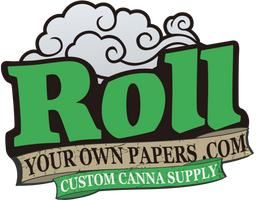
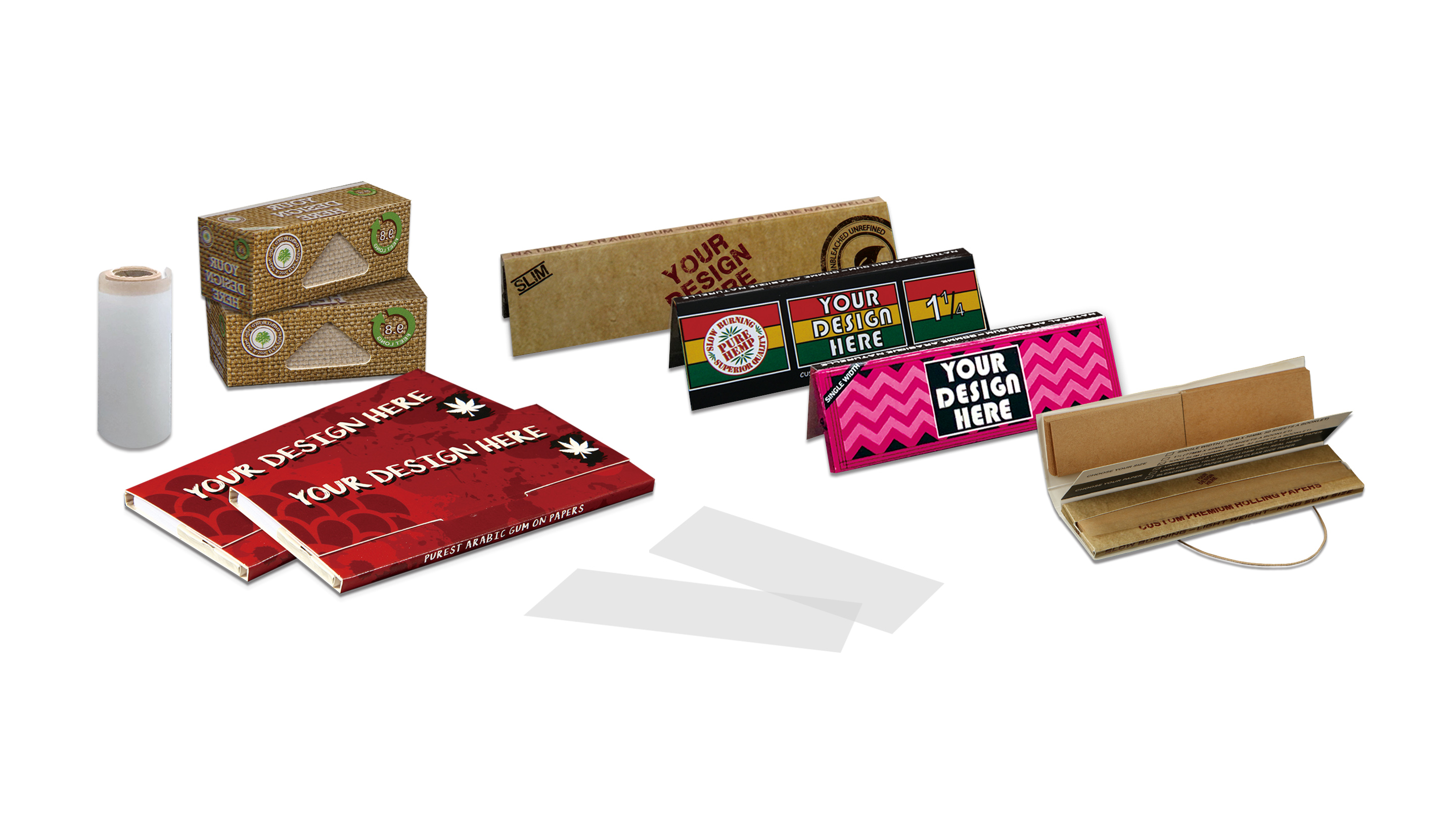

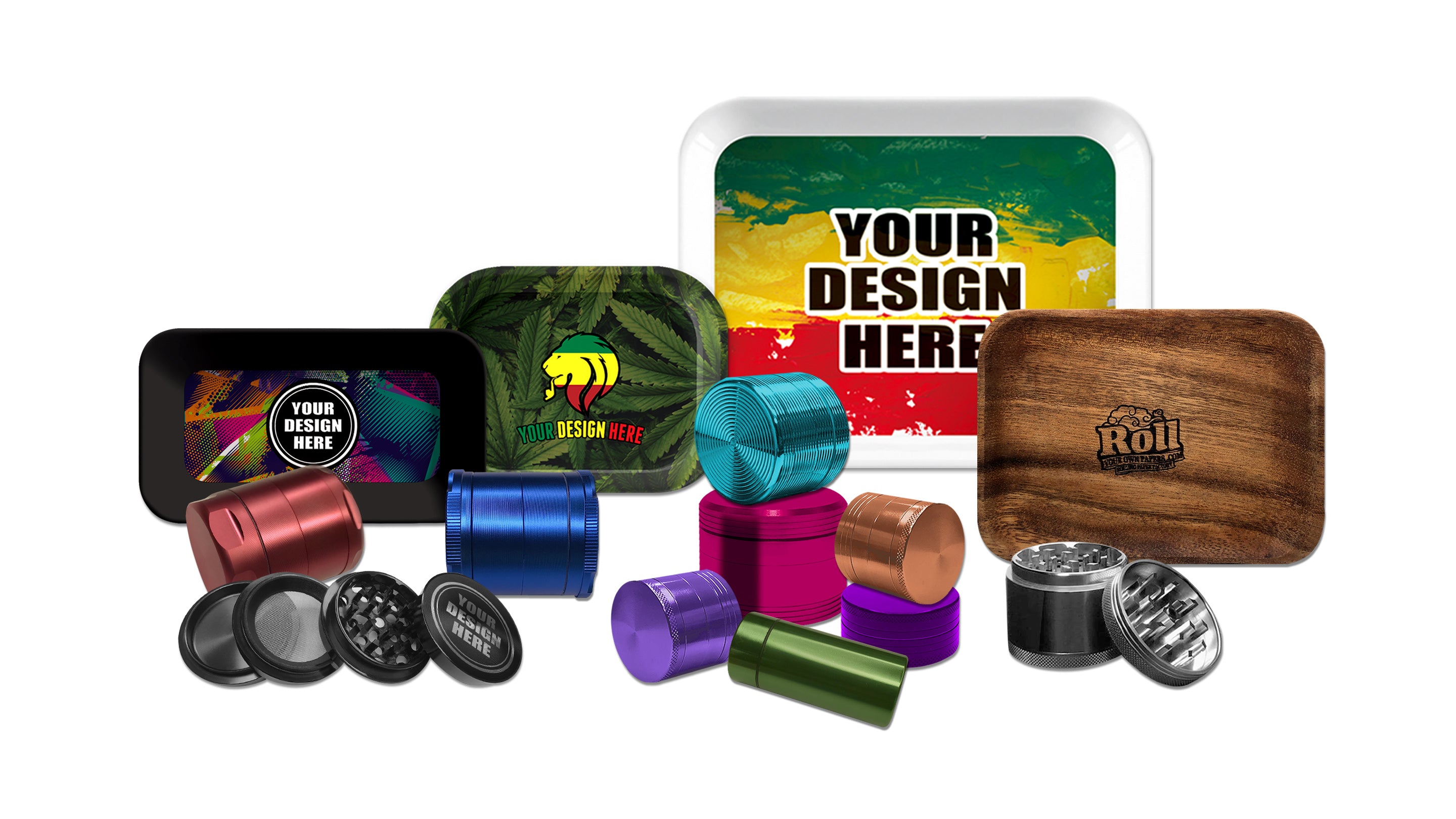
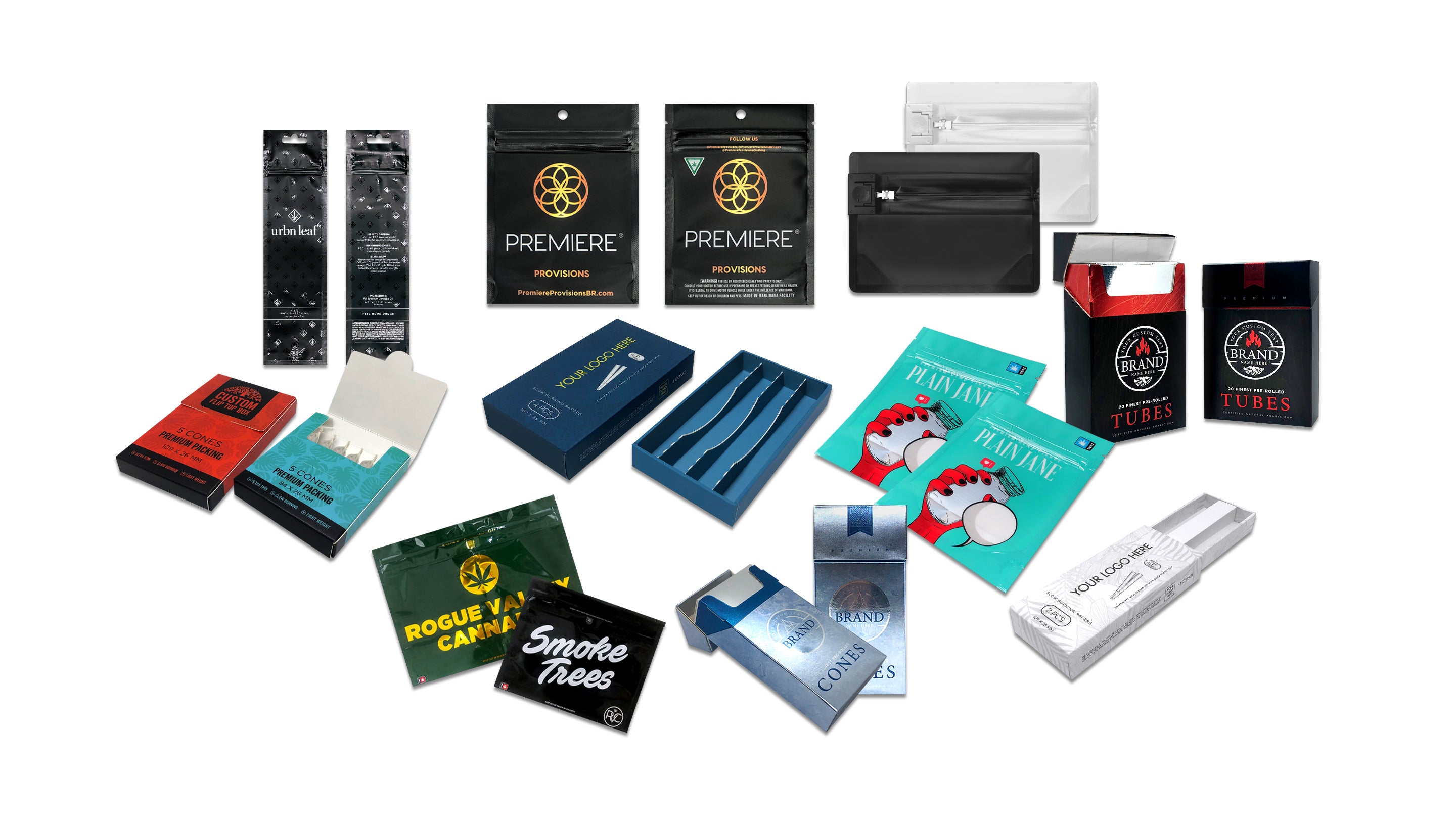
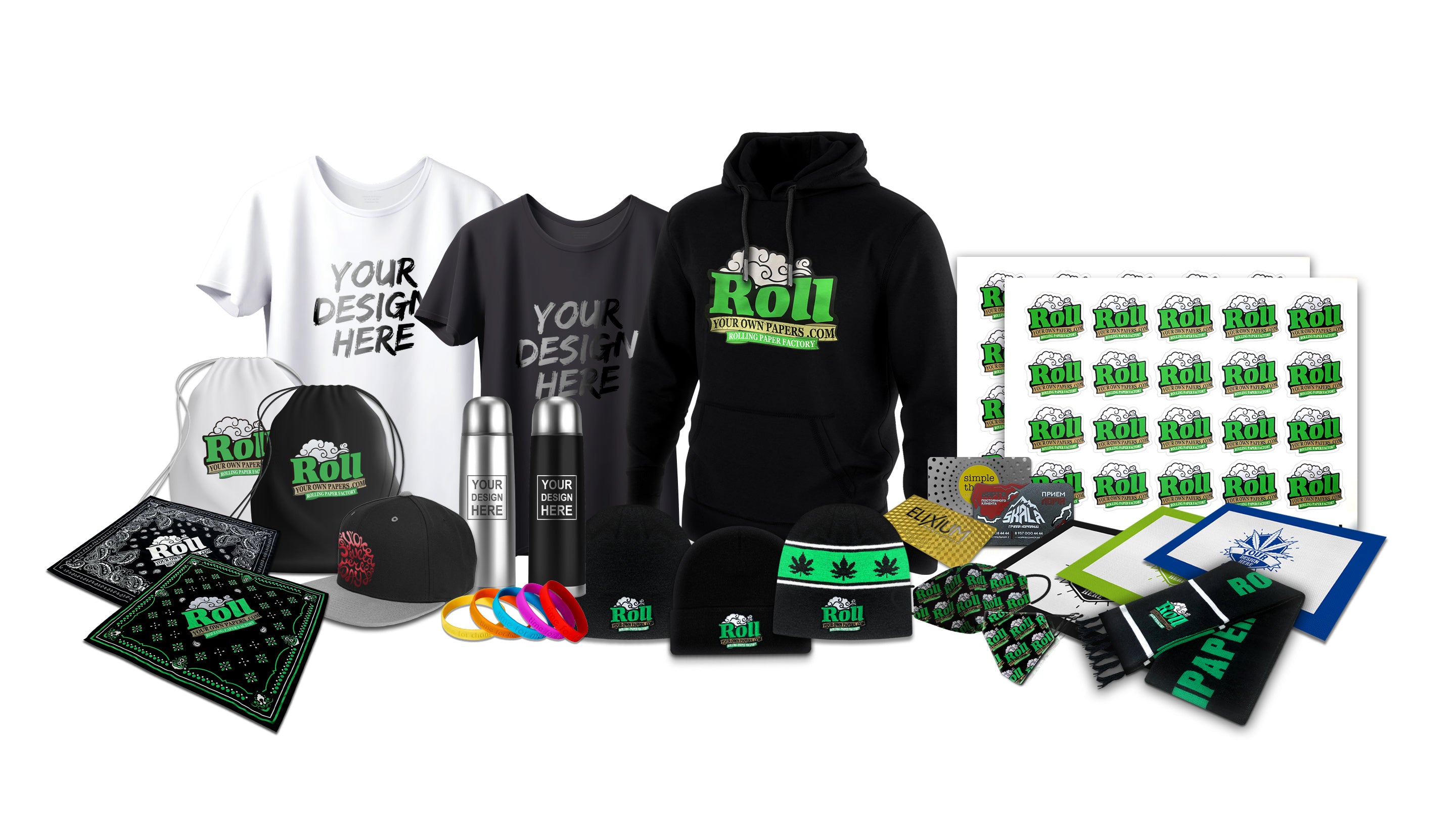
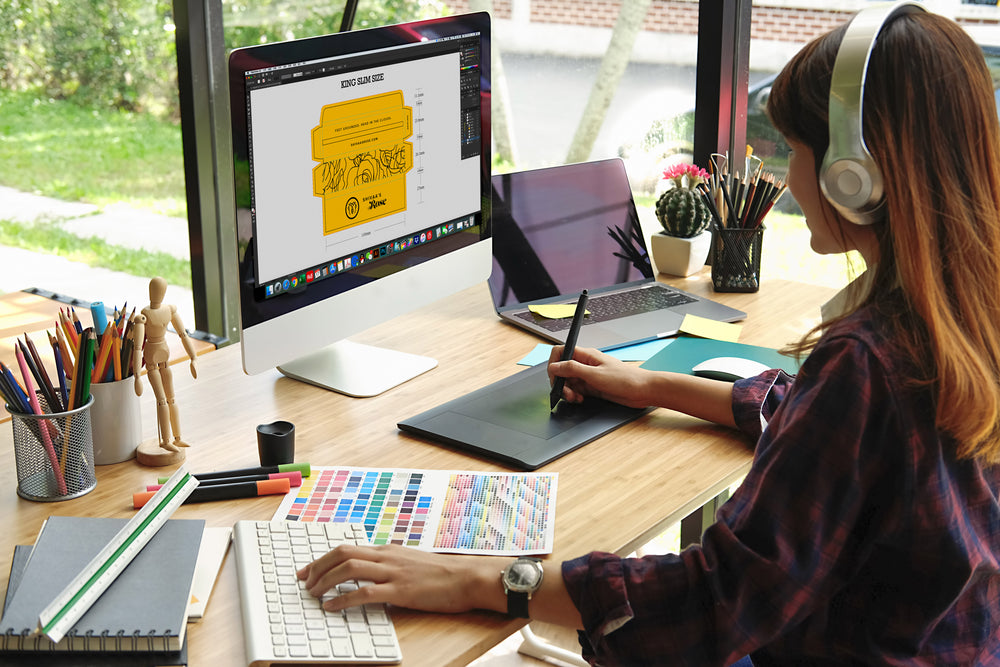



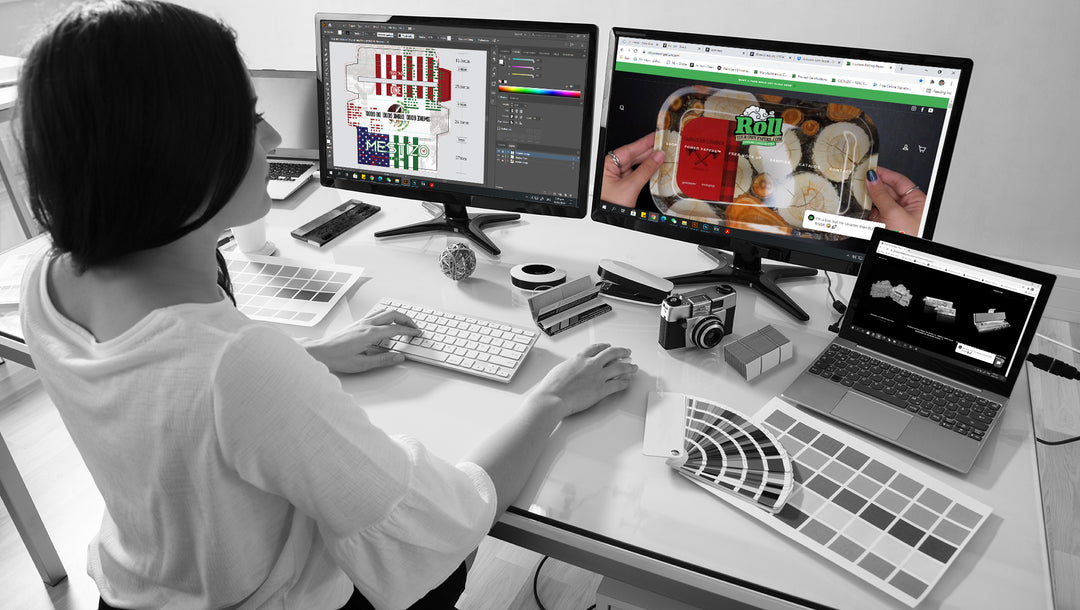
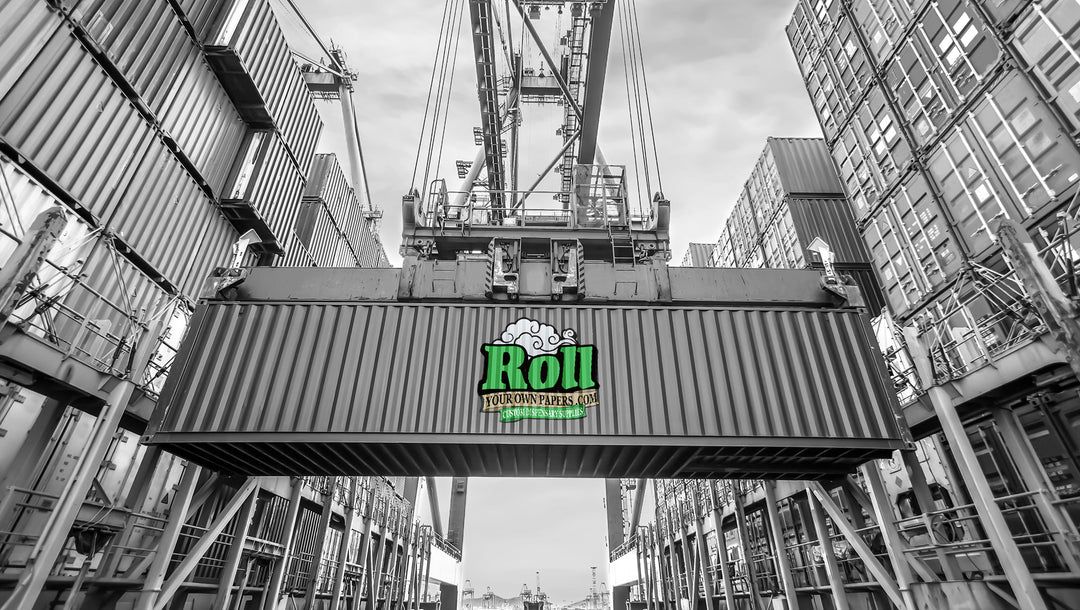
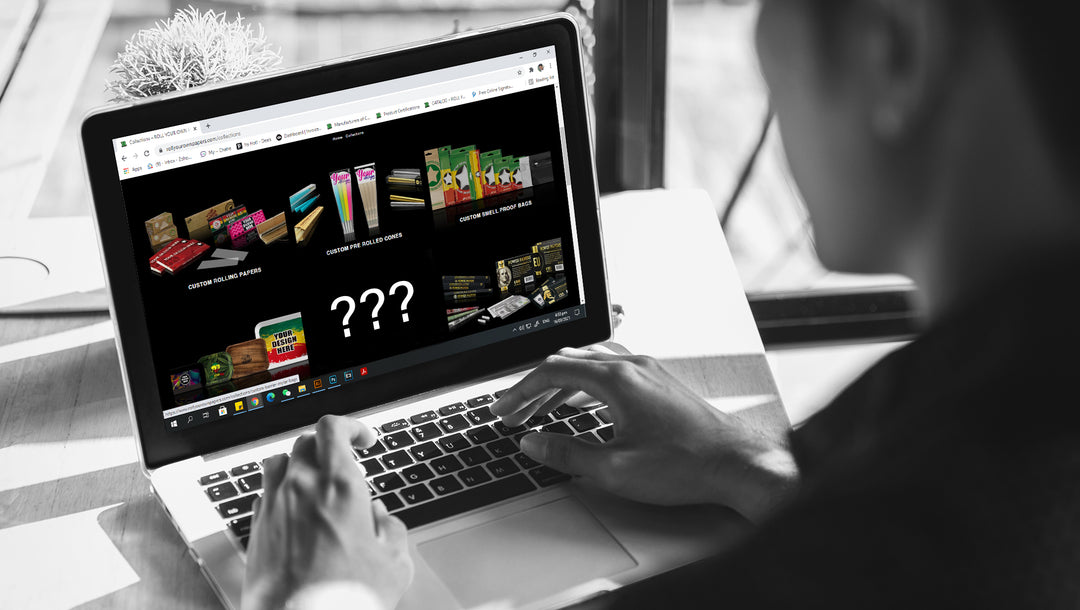
Leave a comment